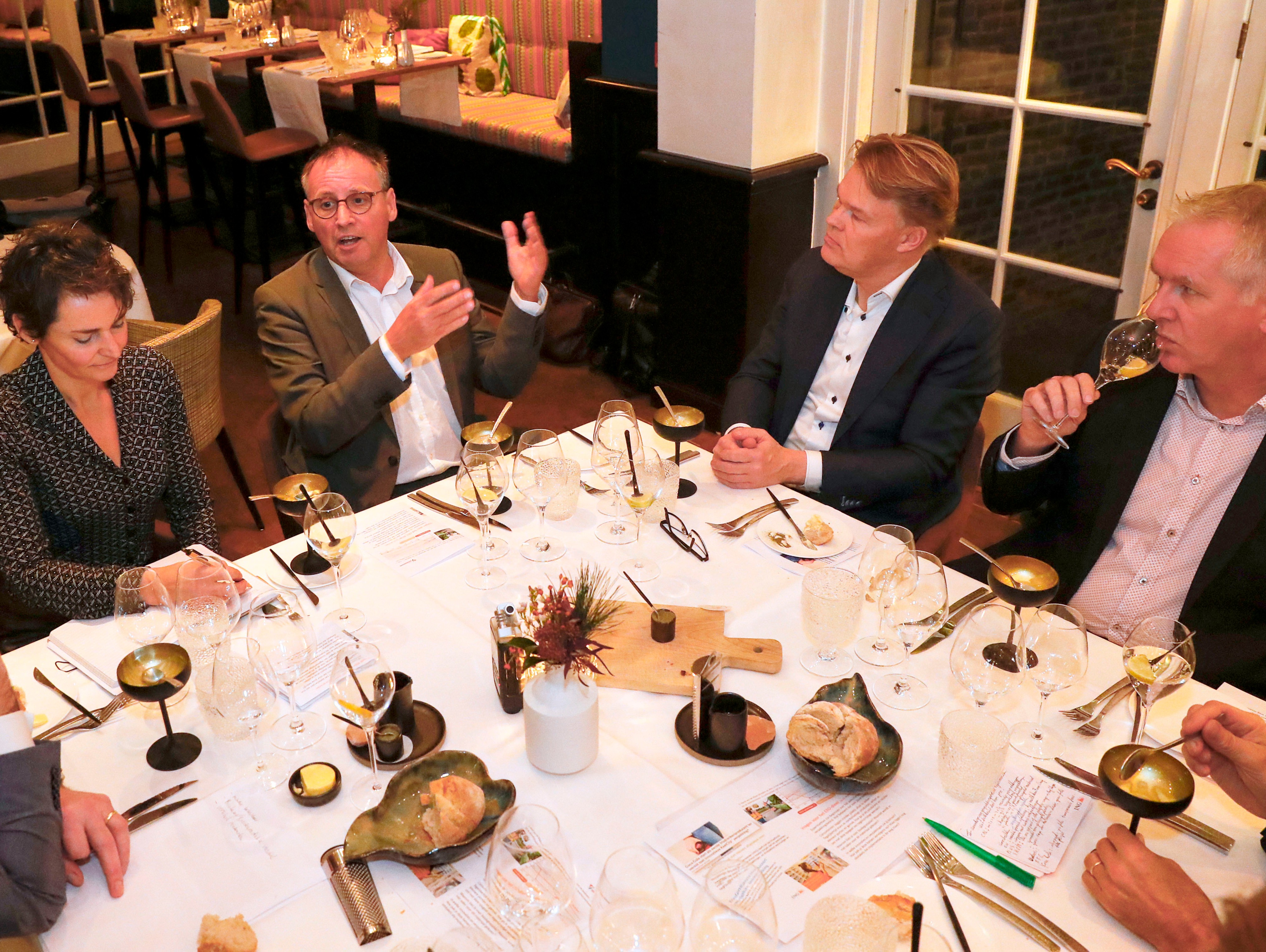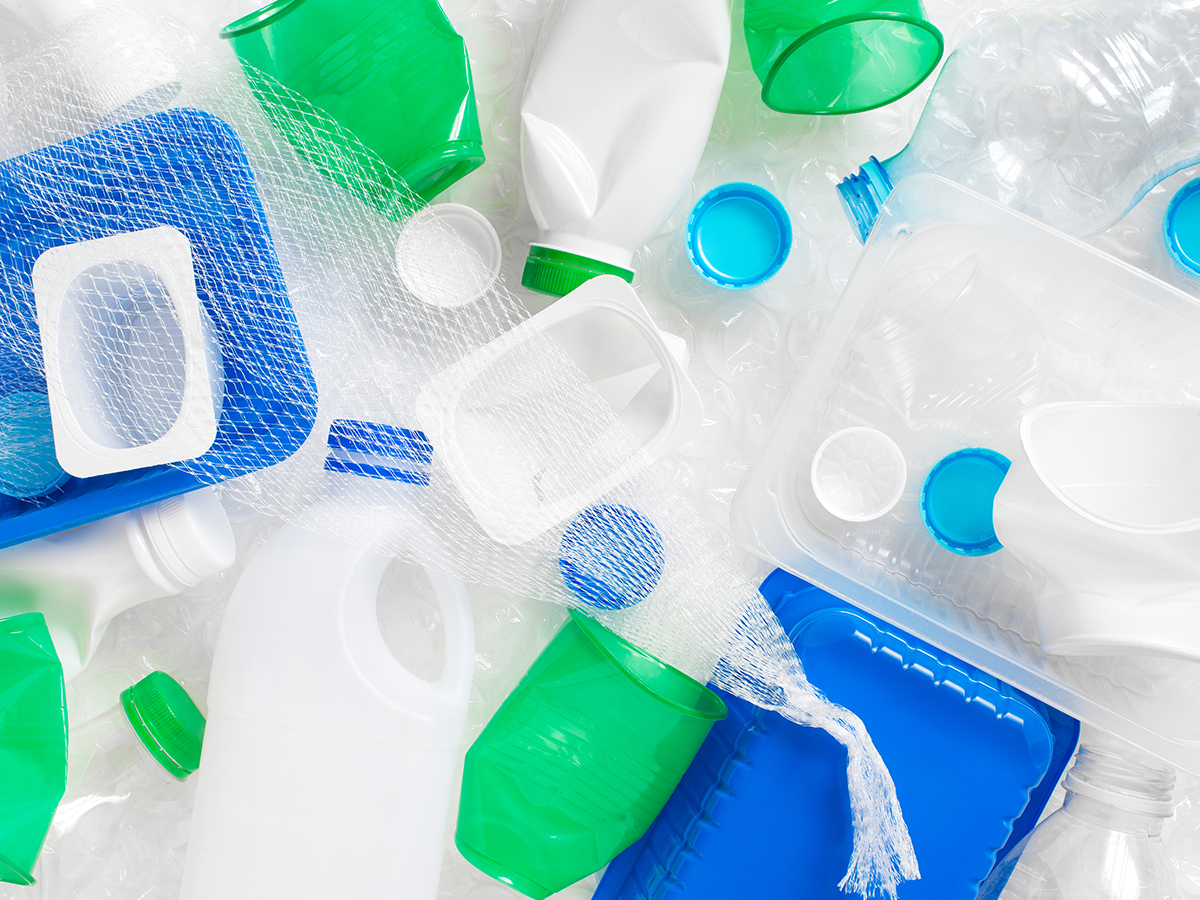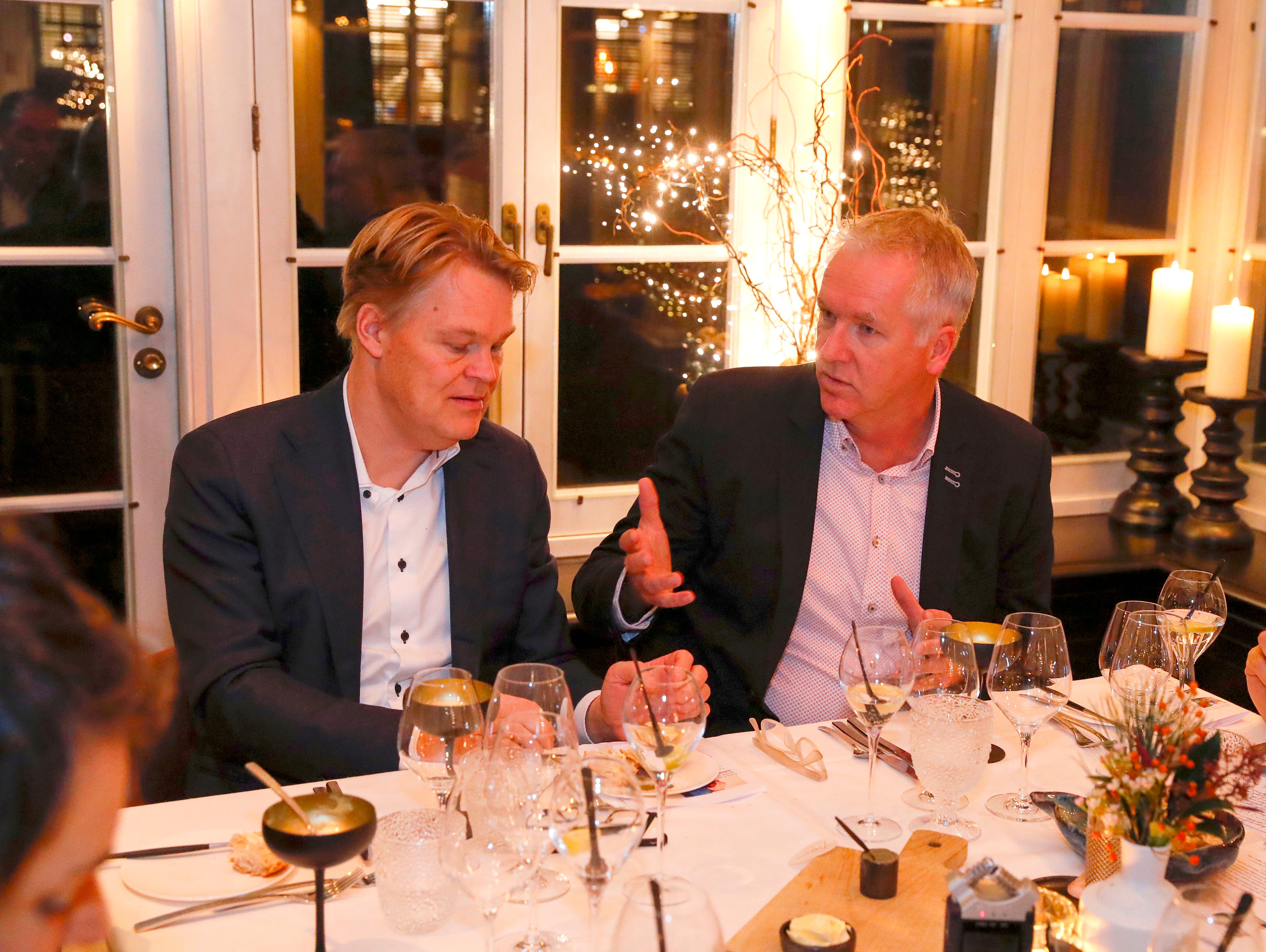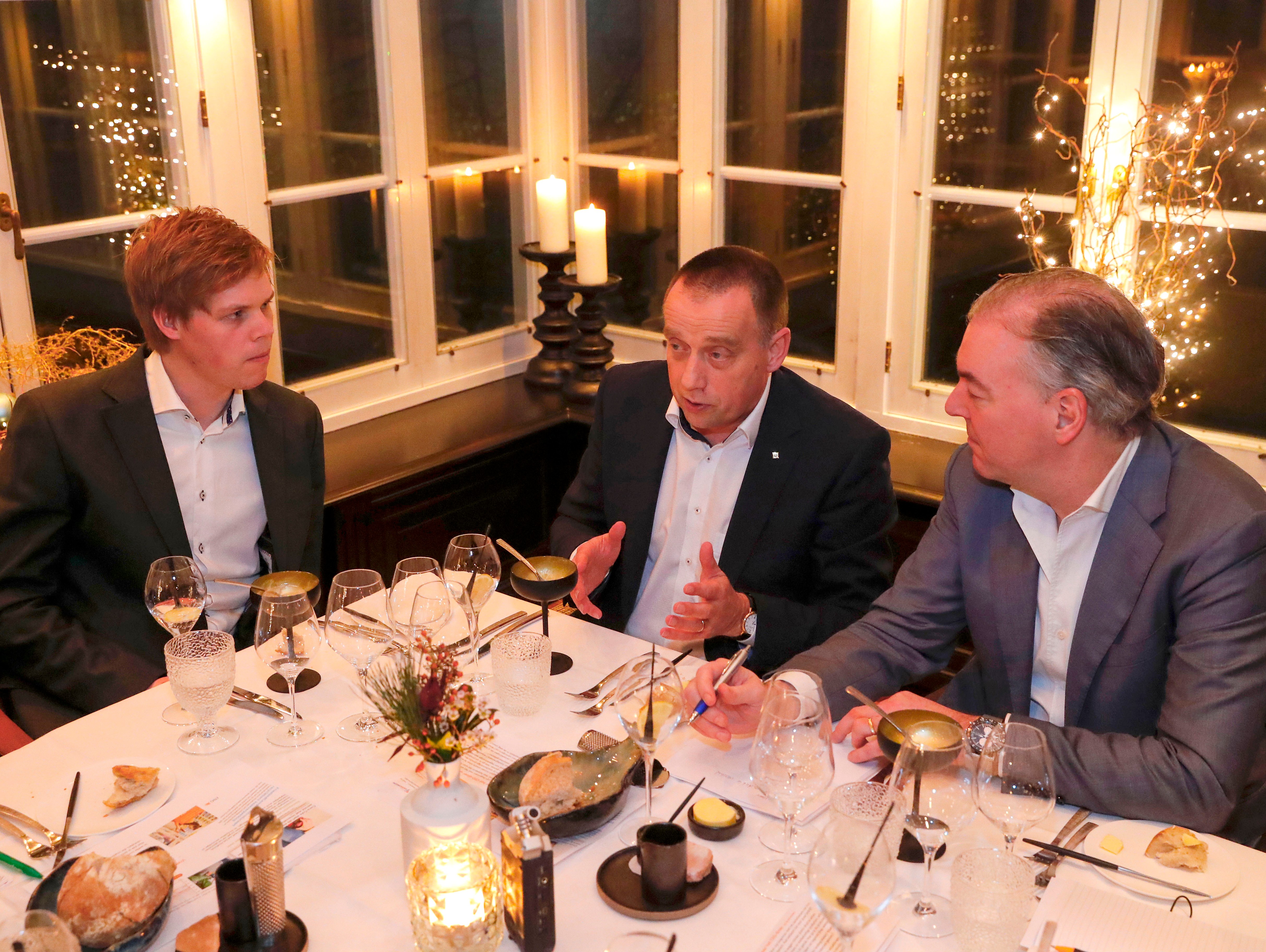
Bringing together people from the industry to exchange insights and share knowledge: that is the purpose of the Roundtable discussions organised by ING in cooperation with the Dutch food industry magazine Vakblad Voedingsindustrie. At the table this second edition are a retailer, two food producers, a manufacturer of packaging and the director of the Sustainable Packaging Knowledge Institute (KIDV). The subject: Sustainable packaging
Participants Roundtable discussion
Seated at the ( square table this time):
We met at Maurick Castle. While enjoying the most delicious dishes, there is lively discussion and relaxed laughter, but above all: frank talk about pitfalls and obstacles with regard to 'sustainable packaging'. Ceel Elemans (ING) opens the discussion on trends in packaging with the agreement that has already caused a lot of controversy: the Plastic Pact. "What does the Plastic Pact mean for you in practice? How does it influence your actions, now and in the future? Signatories of the Pact have a clear goal: they want to use 20% less plastic by 2025 and make plastic products in such a way that you can always recycle plastic. More than sixty organisations signed the Plastic Pact NL, including the large supermarkets. This will have an impact on the suppliers that want to keep their products on the shelves.
Steven IJzerman (Udea), as retail representative, takes the initiative. "in 2018, we opened a plastic-free store using packaging made from alternative materials instead of conventional plastic. With the pop-up store, we wanted to start the discussion that plastic-free shopping is possible. It was clear from the start that the store would be open temporarily, but we felt that the results would be replicated. We are working on that now. Making the stores plastic-free means that we have to make choices. Fortunately, we have a loyal group of regular suppliers who have grown with us over the past 30 years. Many of them no longer want to use plastic themselves. Working together, we are looking for alternatives. We do not just throw good relationships overboard, and we want to take these steps together with the suppliers. Only if you're no longer on the same page... well, then you say farewell to each other." In the search for workable alternatives, the temporary pop-up store Ekoplaza did help, says Steven: "We have put ourselves on the map as a party that really wants to change. Companies are now contacting us themselves if they think they can help us with plastic-free packaging".
"We do that too," says Joan Hanegraaf (Oerlemans Packaging). "We are talking to several retailers, showing them what is already possible and what is not. Then the supermarket links us to the food company on a one-to-one basis".
Rob Banken ( Banken Champignons) nods, he recognizes the working method: "The result however is that we have less say. Where we used to meet the packaging supplier ourselves, now the supermarket decides. They want us to supply mushrooms in cardboard or pulp packaging instead of plastic boxes. But with every change we have to invest in new machines. In a couple of years we went from foil over the tray via a lid to top sealing. Who says it won't be different in 5 years, because they think it's better? As a family business, we like to invest in sustainable packaging solutions, but we will have to be able to pass this on to the chain".
Chris Bruijnes (KIDV) fears, partly due to these rising costs, that if the current approach to the plastic problem does not change, the Plastic Pact could turn out to be a disappointment. "Reducing the use of plastic should not be left to the individual producer or retail organization", he thinks. "The AH, Lidl, Jumbo; they're all going to figure it out now. I plead for us to see a number of issues, such as how best to pack cheese, bread, meat or vegetables, as a joint innovation process. The KIDV is already trying to put that into practice in so-called Communities of Practice. These are groups of companies working on similar problems."
Henri Verhagen (De Kroes Group) would like to see a more joint approach: "There are quite a few retailers in Europe, and I can tell you: they all have a different idea about what is 'sustainable'. Often it's even about the opinion of one buyer, and they come and go. There are buyers among them who think that biobased and biodegradable are different terms for the same type of material. Others only want packaging that does not require a residual waste logo. In France, for example, the recycling systems are different from those in the Netherlands, and here it even differs per municipality. Figure it out, as a producer. Each supermarket chain and each country has to provide a different packaging for our biscuits."
Chris Bruijnes: "Still, I think we could be a bit more positive about the joint solution routes. For the application of monomaterials, we can come to an unambiguous conclusion across borders. Not for all packaging, and perhaps not always for food. But why not put shampoos and cleaning products all in the same kind of polymer? I see opportunities there. I hope that we are now entering a new phase and that with the cunning plans of the European Commission, a unification process will start".
Joan Hanegraaf: "I am in favour of standardization. Of course we develop packaging for specific applications, but within the same product groups there are definitely steps towards uniformity".

Ceel Elemans: "The focus in the discussion is very much on 'plastic-free'. What about the substitutes, such as glass, cans, cardboard and biodegradable materials? Are they more sustainable? And what do you take into account when considering whether a material is sustainable or not?
Joan Hanegraaf immediately brings nuance to the proposition: "There is no such thing as sustainable packaging", he says. It is possible to make it more sustainable. You do that by replacing materials and products with something that is less harmful to the environment. A 'battle of materials' is undesirable. First and foremost is the functionality of the packaging, we pack with a clear goal".
Rob Banken responds to this with a practical example: "Mushrooms are a daily fresh product, with a shelf life of 6 days. The plastic container is good for the mushrooms. They are moist and a package must be able to breathe to keep them fresh. That's why there are holes in the box. We are looking for alternatives to the current plastic containers, but the shelf life and food safety of our product must not be endangered. Almost everything about mushrooms is already sustainable, it is a circular product. We grow on horse manure and straw and have been doing vertical farming for decades. In consumer perception, the familiar blue tray needs to be replaced, so we investigated a number of options, including trays made of pulp from a residual flow from the furniture and paper industry. We are testing what that material does to the shelf life and taste of the mushrooms, and what its influence is on the moisture balance of the mushrooms. It all looks good, but there is one side note. Retail comes at a price: it costs more, and they don't always want to pay for that".
Joan Hanegraaf: "'True pricing' is mentioned as a solution to this problem, but I don't think it will work. If Dutch products are ten cents more expensive because of the packaging, the consumer buys a cheaper version from abroad. It will only work if Europe takes a unified approach".
Henri Verhagen: "What you have to take into account in the sustainability story is the reason for packaging. For us it is: 'bring the product to the customer in the best way possible and undamaged'. We make tasty biscuits and put a box around them. If that box looks attractive, the consumer is prepared to buy the product. In addition, the packaging must ensure that the biscuits have a shelf life of 12 months. Why so long? Because we don't want to throw anything away. So the discussion about more sustainable packaging is about shelf life, and about wanting to avoid waste, because if it is wasted, all the energy that has gone into the chain for that purpose has been completely useless. Take the cucumber in shrink-wrapped packaging. That plastic extends the shelf life by 6 weeks, saving tons of wasted vegetables".
Chris Bruijnes: "The fact that plastic is sometimes more durable than another material, or even no material at all, isn't something that consumers are aware of. We believe that we should never increase recyclability at the expense of food safety. If food remains good in a better quality plastic, even if the packaging consists of multiple layers. Why should you opt for monoplastics instead of laminates when the result is that the plastic has to be heavier and thicker to achieve the same barrier requirements? I can't figure out that logic! After all, plastics have good packaging properties. And if the laminate cannot be recycled and eventually has to be incinerated, then unfortunately this is only for a short time. We simply mustn't stop looking for solutions, like even better sorting and reprocessing techniques".
Steven IJzerman: "Still, we want to achieve truly circular packaging in our supermarket. We therefore opt as much as possible for the development of materials that can be broken down by nature. As long as plastic recyclate is not an interesting raw material for food packaging, recycling is not circular. That's why for us it's not an end solution but an interim solution".
Joan Hanegraaf: "We therefore plead for the constant reconsideration of previously made choices. Certainly in the design there is a lot to gain. Think of the plastic bag coated with paper, just to give it a more durable appearance. It has no functional use whatsoever, and is only done to stimulate sales. If you, as a company, want to make it more sustainable, also in the field of packaging, it is therefore hopeless for individual departments to make these kinds of decisions. Each department has its own agenda. It only has a chance of success if it is supported and steered by the management. The packaging must be part of the management consultation. Just like redesign, reduce, recycle and renew."
Chris Bruijnes: "We do see a slight rise in more reusable packaging for some products: sugar, nuts, rice and pasta. Whether a reusable packaging that you wash and use again, is more durable than a single-use packaging, can be calculated. A cardboard suit with a foil layer for custard that you can squeeze out still causes a bit of food waste per pack. The amount of food wastage is quite large on all those packages sold. The alternative to fat dairy is to go back to a glass bottle, or switch to a PET bottle, for example, and a bottle-licker to get the leftovers out. But glass is heavier. So you have to weigh up that complexity integrally."
"We have glass bottles for (thick) dairy!" Steven responds. "Our consideration with the glass bottle is: re-use is also a solution for less waste".

Ceel Elemans: "Why isn't there more biodegradable packaging on the supermarket shelf? An argument against biobased biodegradable plastic is that in practice these types of packaging often end up in the incinerator. It is absolutely not allowed to get mixed in with the plastic waste. If it does, the plastic recyclers will remove the biodegradable plastic from the plastic waste flow. And even at the composter, biodegradable plastic is removed, often in advance. Because although bioplastics are compostable, the current system is not designed for it. Perhaps the current regulations need to be adapted: from a composting time of 6 to 12 weeks, in order to give bioplastics time to compost? Does that make sense if the material is not a soil improver? If there is no co-benefit to it, the law does not allow it in the soil. So it's a dilemma. What do you choose as a producer or retailer? And where does the responsibility for proper collection lie? With the consumer, the producer or the government?"
Joan Hanegraaf: "In 1992 Oerlemans already started using biodegradable plastics; but for use in agriculture and horticulture, worldwide. Proper separation is not an issue here. So the effort here is beneficial. We can earn more from biodegradable packaging than from traditional plastic, but we do not recommend it for consumer packaging because there is no advantage to be gained here. Consumers don't recognize it.
Ceel Elemans: "Would it help to make biodegradable plastics more recognizable for the consumer by giving these packaging its own colour, so that awareness increases and the packaging ends up in the right container?
Joan is happy with that, but Chris doesn't agree: "Separating sources is good for increasing public awareness of the value of waste," he says. "But the system of source separation also involves costs. If, as a result of technological progress, post-separation proves to be a better option, we should not continue with the system of source separation just because of the 'awareness'. The developments in recycling techniques continue: in Amsterdam there is a company that has developed a new technology for processing plastic packaging waste from post-separation. And I've now finished believing that consumers will make the difference; they don't care. The responsibility lies with the producers, the sorting centres, the recycling companies and politicians. It's unrealistic to think that the consumer will be able to ask himself every time in which bin his waste has to be put, if that protocol keeps changing".
"I find it too easy to say 'I don't trust it anymore, so let's leave it with the producer'," Henri Verhagen reacts fiercely. "That consumer makes choices all day long; on price, quality, where they buy from, whether they want organic or vegan. In my opinion, it is certainly possible to include the consumer in the process via a marketing or government campaign. The whole chain has to cooperate, otherwise it is not going to work!
Chris Bruijnes: "I totally agree with you that it should, but unfortunately it doesn't work that way! On all the packaging of AH's own brand is a throw-away indicator; a logo that indicates how to dispose of the packaging. Research has shown that it is poorly looked at and is often not dealt with. That is sad, but it is the reality. There is a big difference between the behaviour of consumers when buying a product and their behaviour in a waste disposal situation. When choosing candy tomatoes, consumers check whether they look tasty in the bucket in the supermarket. In that case some plastic may be wrapped around them; handy even, because that's hygienic and that's how they stay together. But as soon as the tomatoes are in the salad, the empty bucket on the counter only causes annoyance. At that moment, a marketing strategy for waste no longer works. The user only wants to get rid of the waste as quickly and easily as possible. The maximum you can then achieve is: all plastic in the plastic waste. It's very difficult to influence that behavior."
Joan Hanegraaf: "And even if we're all doing very well in the Netherlands, nearly pricing us out of the market with our good behaviour, you can see that in a number of countries around the Mediterranean Sea they are pushing waste into the sea with bulldozers. There is no good collection system and no processing capacity there. And that's just a stone's throw away! It is not even a theme in European politics. I find that really shocking."
Steven IJzerman: "Better recycling is often mentioned as the solution to the plastic problem. But plastic remains a material that degrades, not breaks down. Let's just say as a group: 'we follow other paths as well'. Although the current compostable packaging is not recycled or composted well enough, that is no reason for us not to use the material. We don't think it's wrong that the material doesn't yield much in the cycle yet. We should not dispose of these materials just because they do not fit into today's recycling systems".
Henri is also troubled by the dependence on how recycling is done at the moment: "Our cardboard boxes are packed together in an outer carton for transport. Nowadays, we could have those boxes made from grass; a more sustainable solution. Unfortunately, such cardboard cannot go with the green waste or on the compost heap, even though the material is biodegradable, it is not a soil improver. Nor should it go with the waste paper. So it has to be incinerated. But the boys who work at the supermarket often don't know this. They throw the boxes on the big pile with the other cardboard. Do I have to educate them now? A similar story is that of the chicken egg in paperfoam. A durable egg, wrapped in durable material. It is biodegradable and compostable, but doesn't enrich the soil: that's why it shouldn't go with the green waste. Not even with the waste paper, because it contains only 12% fibres. The box should therefore go with the residual waste, but Albert Heijn does not want packaging with a residual waste logo; it would rather have a plastic egg carton.
Chris responds: "Yes, and then Paperfoam knocked on the KIDV's door for advice. We heard that their packaging does indeed score low on recyclability, but particularly well on a low CO2 footprint based on an LCA. LCA is a chain analysis that looks at the entire life cycle of a product or activity: from extraction of raw materials through production and (re)use to waste processing. To determine whether a packaging is sustainable, many more aspects play a role than just recyclability. We look at circularity, environmental impact and functionality, such as the contribution of packaging in preventing waste. The LCA of the paperfoam is so high, I dare say it's very sustainable after all".

The dessert arrives, and we are also ready for the last question of this evening: "In what innovations and more sustainable packaging do you see opportunities? Ceel and Renco make a tour of the participants. Steven sees a clear dot on the horizon, the direction in which innovations should ideally move: "Our definition of a more sustainable packaging is that it consists of recyclable and biodegradable material, which is deigned from a residual flow. Bioplastics are only more sustainable if the material is made from real waste flows, for example from sewage sludge or from the stems of tomato plants. Production should therefore not compete with farmland and raw materials for food production. Furthermore, the packaging must have one or more clear functions, including ensuring food safety and preventing waste. That's what we're aiming for."
Henri: "We try to take a broader look at our own activities and what is possible within them. We have a strong drive to innovate, to do business and to pack more sustainably from a 'safe-the-world' idea. Of course, there is also a commercial component to it. If it only costs money, nobody does it. But without drive and passion, it won't work. I think we should all look for our drives."
Rob has a playful and promising solution for the plastic waste mountain: the mushroom that eats plastic. "If you put these little mushrooms on a waste heap, they' eat all the polyurethane! We are also busy producing our own compostable mycelium packaging. This widely branched underground network of fungal threads produces a compact substance that you can use as packaging. In this way we are no longer just a food producer, but also a producer of a new side stream for packaging".
At Oerlemans, too, the focus remains on the development of new materials. Joan: "Like a foil for fresh fries that is 100 percent recyclable. We are also in the process of replacing PET with a material that can be recycled, and are developing a method for de-inking". And then he proudly shows the company's latest innovation: a kind of QR barcode hidden in the plastic's print. "Look," he says, and he points an ordinary barcode scanner from his mobile phone anywhere on the plastic. Immediately the screen shows which material it is, and in what waste stream it should be. "This is a practical solution, both for a system of source and post separation. The waste processing plants also have scanning machines that can read these codes".
Continuing with this, Chris sees opportunities in the short term, especially in improving detectors in sorting and recycling. "In the longer term, we need innovations that have a deeper impact on the way we consume," he expects. "That innovation will come, I am convinced. The new generations no longer want to gloss over the problems and they have an intrinsic aversion to tampering".
Not everything that has been discussed during this Round Table meeting could be reproduced in this article. The subject is alive, there is much to tell about it, much is uncertain; it is broad and specific at the same time. The participants definitely disagreed on some points, but agreed with each other on other subjects. And on one points they were unanimous: it is very useful to enter into dialogue with each other as during this type of Round Table discussion; for a broader view of the problem and to exchange knowledge. Because: sustainability is something we achieve together.
Stay informed via ING's Agri & Food sector page
Source: ©Bert Jansen Fotoburo